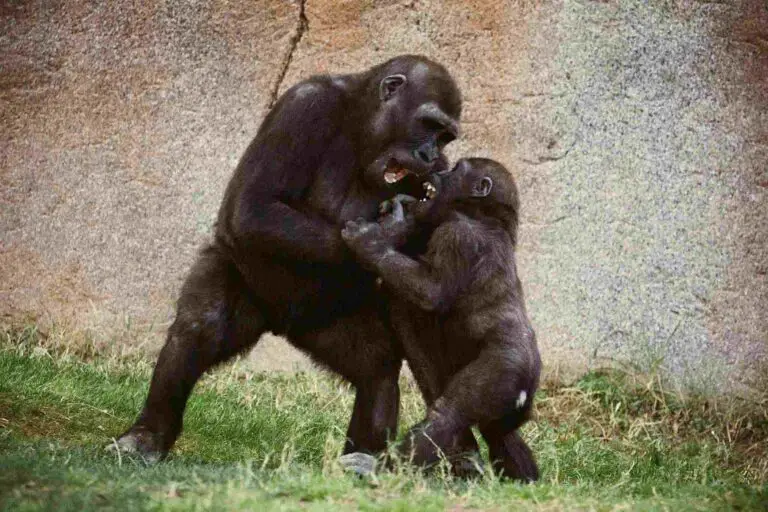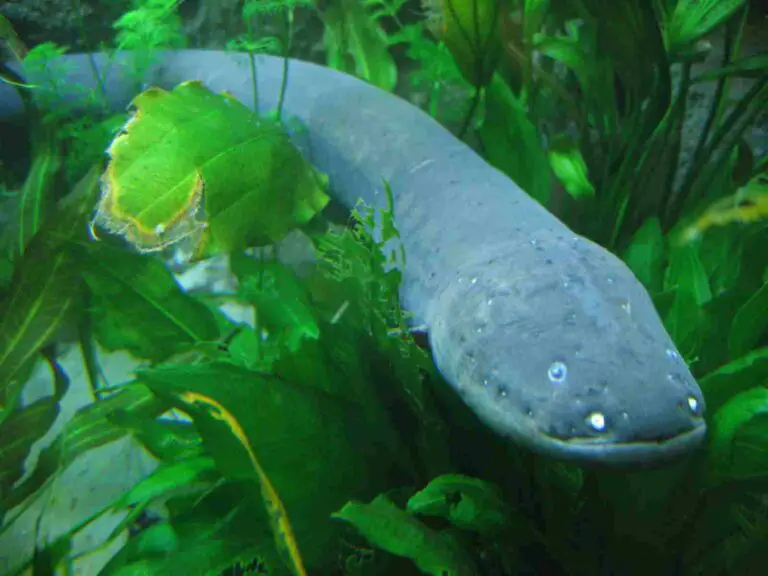Northern Rat Snake Facts, Characteristics, Description
The northern rat snake, scientifically classified as Pantherophis alleghaniensis, exhibits various traits and behaviors that are essential for its survival and ecological role. Its adaptability to diverse habitats, non-venomous nature, and diet consisting primarily of rodents contribute to its importance in controlling prey populations and maintaining ecosystem balance. However, threats such as habitat loss and persecution necessitate conservation efforts to ensure its long-term survival. Despite being popular as pets, responsible ownership practices are crucial to minimize potential impacts on wild populations.
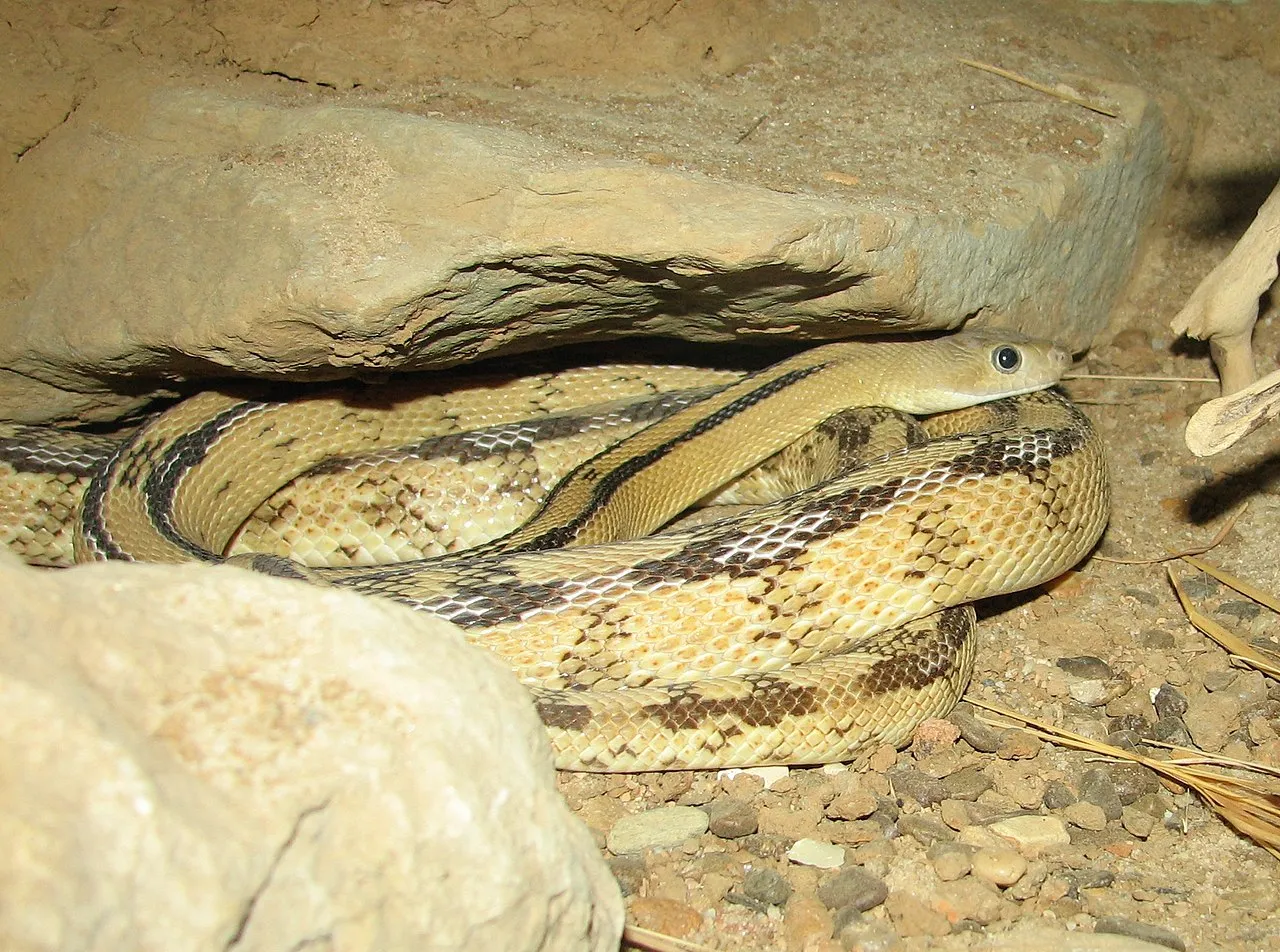
*Facts About the Northern Rat Snake
- The northern rat snake is scientifically known as Pantherophis alleghaniensis.
- It has two recognized subspecies: Pantherophis alleghaniensis alleghaniensis and Pantherophis alleghaniensis romalea.
- Northern rat snakes typically measure between 3 to 5 feet in length and weigh between 1 to 2.5 pounds.
- They have sleek bodies with keeled scales, usually black or dark brown with blotches or patterns ranging from gray to brown or reddish-orange.
- Northern rat snakes have numerous small teeth curved backward for gripping and swallowing prey.
- They are non-venomous and use constriction to subdue their prey.
- Their diet includes rodents, birds, bird eggs, amphibians, and occasionally insects.
- Northern rat snakes are solitary and primarily active during the day (diurnal).
- They may hiss or vibrate their tails when threatened but are generally silent animals.
- Northern rat snakes inhabit various habitats such as forests, woodlands, grasslands, and wetlands.
- Their range spans from southeastern Canada through the eastern and central United States, reaching as far south as Florida and as far west as Texas.
- They lay clutches of eggs in underground burrows or other sheltered locations, with an incubation period of about 60 days.
- In the wild, they have an average lifespan of around 15 to 20 years.
- Major adaptations include climbing, swimming, cryptic coloration, and constriction for prey capture.
- Conservation status varies, with threats including habitat loss, road mortality, and persecution.
- While popular as pets, responsible ownership is crucial to minimize ecological impacts.
1. Scientific Classification:
Kingdom: Animalia
Phylum: Chordata
Class: Reptilia
Order: Squamata
Family: Colubridae
Genus: Pantherophis
Species: Pantherophis alleghaniensis
Subspecies: Pantherophis alleghaniensis alleghaniensis, Pantherophis alleghaniensis romalea
2. Subspecies:
Details: The northern rat snake has two recognized subspecies: Pantherophis alleghaniensis alleghaniensis and Pantherophis alleghaniensis romalea.
Importance: Understanding subspecies distinctions helps in conservation efforts and tracking population dynamics.
Ecological Implications: Subspecies variations can indicate local adaptations to different environments, influencing their role in ecosystems and potential conservation strategies.
3. Size and Weight:
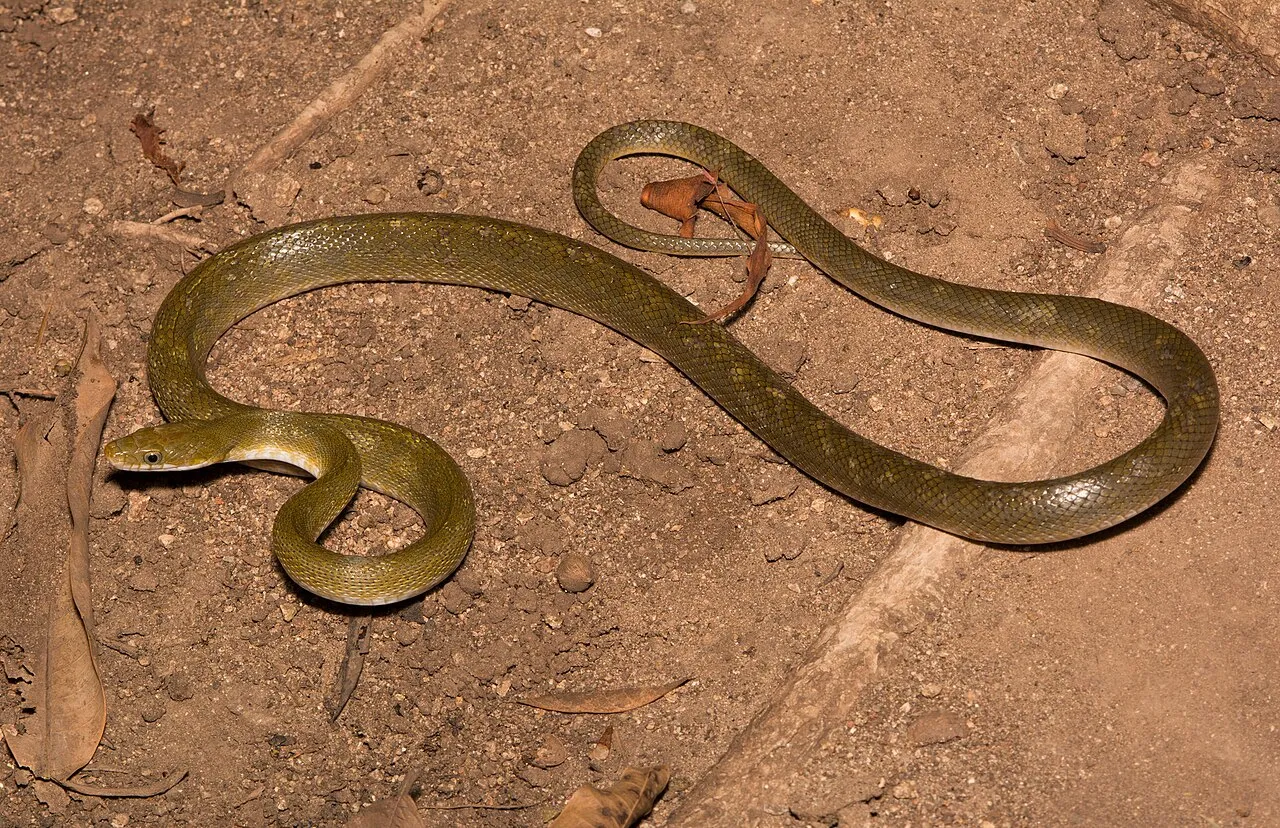
Details: Northern rat snakes typically measure between 3 to 5 feet in length, although some individuals can grow up to 6 feet or more. They usually weigh between 1 to 2.5 pounds.
Importance: Knowledge of their size and weight aids in identification and understanding their ecological role.
Ecological Implications: Their size influences their prey selection, reproductive capacity, and interactions with other species within their ecosystem.
4. Appearance and Identification:
Details: Northern rat snakes have a sleek body covered in keeled scales, typically black or dark brown with blotches or patterns ranging from gray to brown or reddish-orange. Their underside is usually white or yellowish.
Importance: Identification is crucial for researchers, conservationists, and enthusiasts to distinguish them from similar species.
Ecological Implications: Their appearance can play a role in camouflage, predator avoidance, and prey detection, impacting their survival and ecological interactions.
5. Dentition and Bite Force:
Details: Northern rat snakes have numerous small teeth curved backward to aid in gripping and swallowing prey. Their bite force is relatively low compared to venomous snakes.
Importance: Understanding their dentition and bite force helps assess potential risks to humans and other animals.
Ecological Implications: Their teeth are adapted for capturing and consuming prey, contributing to their role in regulating prey populations and maintaining ecosystem balance.
6. Venomous Potency:
Details: Northern rat snakes are non-venomous and pose no threat to humans. They use constriction to subdue their prey rather than venom.
Importance: Recognizing their lack of venom helps dispel misconceptions and reduce unnecessary fear of these snakes.
Ecological Implications: As non-venomous predators, they contribute to controlling rodent populations, which can have cascading effects on ecosystems.
7. Diet:
Details: Northern rat snakes are primarily carnivorous, feeding on rodents, birds, bird eggs, amphibians, and occasionally insects.
Importance: Understanding their dietary preferences aids in predicting their impact on prey populations and their role within the food web.
Ecological Implications: As efficient predators of rodents, they help regulate prey populations, which can influence vegetation dynamics and other species interactions within their habitat.
8. Behavior:
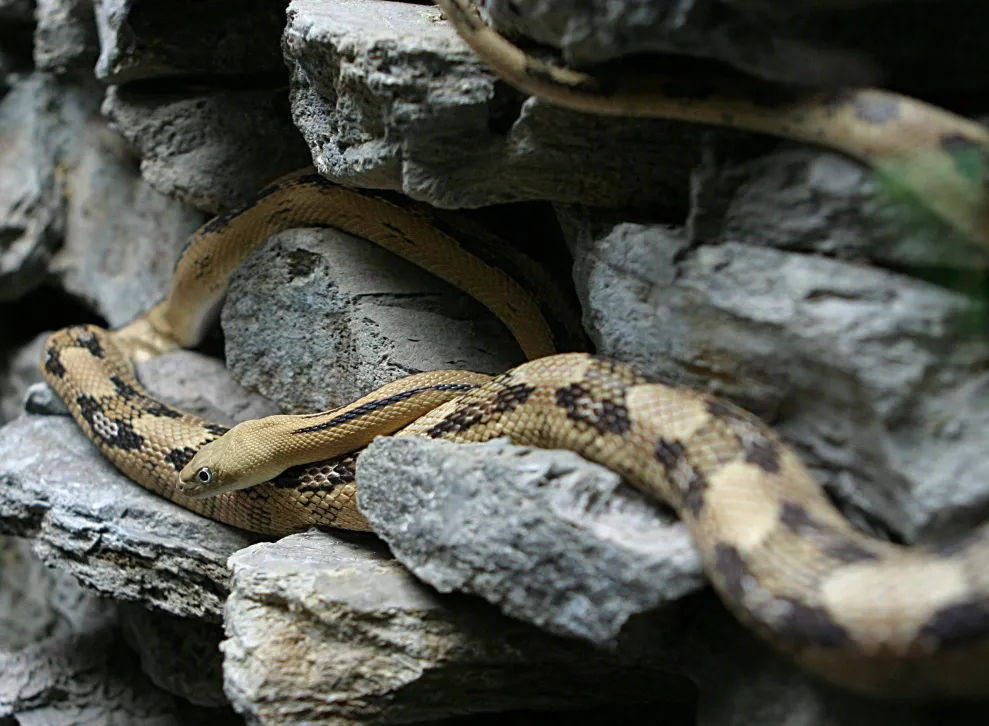
Details: Northern rat snakes are solitary and primarily active during the day (diurnal). They are excellent climbers and often found in wooded areas, grasslands, and near water sources.
Importance: Knowledge of their behavior is crucial for understanding their habitat requirements and interactions with other species.
Ecological Implications: Their behavior influences their habitat use, prey selection, and potential interactions with humans or other animals sharing their environment.
9. Sounds/Vocalization:
Details: Northern rat snakes are generally silent animals and do not produce vocalizations. However, they may hiss or vibrate their tails when threatened.
Importance: Understanding their vocalizations or lack thereof can aid in communication and behavioral studies.
Ecological Implications: Their lack of vocalizations may impact their ability to communicate with conspecifics or other species, affecting their social dynamics and predator-prey interactions.
10. Habitat:
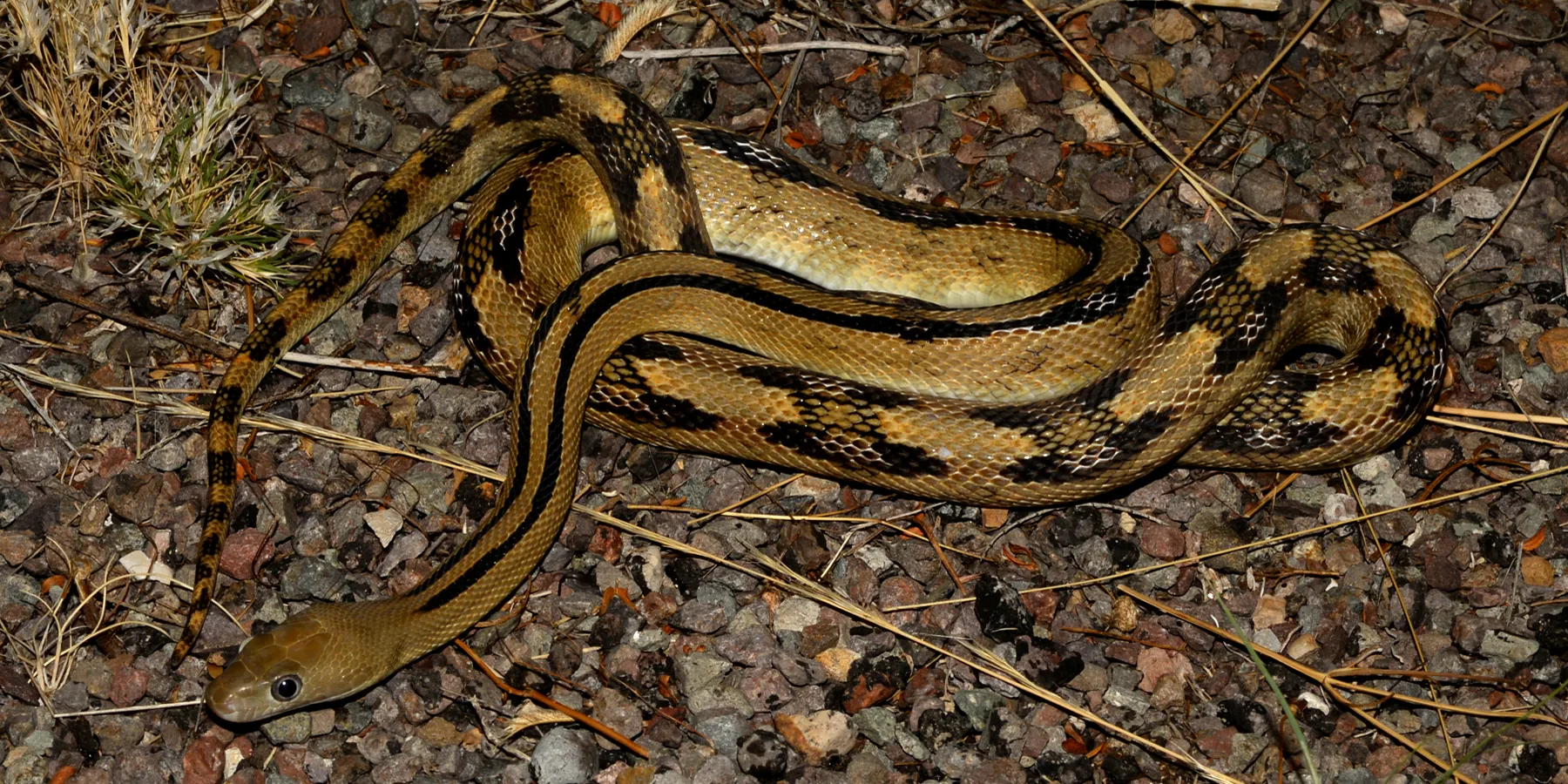
Details: Northern rat snakes inhabit a variety of habitats including forests, woodlands, grasslands, farmlands, rocky areas, and wetlands. They are often found near water sources.
Importance: Knowledge of their habitat preferences is essential for conservation efforts and habitat management.
Ecological Implications: Their habitat use influences their access to prey, shelter, and potential threats, shaping their distribution and population dynamics.
11. Geographic Range and Distribution:
Details: Northern rat snakes are native to North America, with a range spanning from southeastern Canada through the eastern and central United States, reaching as far south as Florida and as far west as Texas.
Importance: Understanding their distribution helps assess their conservation status and prioritize conservation efforts.
Ecological Implications: Their geographic range reflects their adaptability to different environmental conditions and their role in various ecosystems across their range.
12. Tracks:
Details: Northern rat snakes leave tracks characterized by a series of belly scales imprinted in the substrate. These tracks may vary depending on the surface type and the snake’s movement.
Importance: Track identification aids in species monitoring, population surveys, and understanding their movement patterns.
Ecological Implications: Tracking movements can provide insights into habitat use, resource utilization, and potential barriers or corridors affecting their dispersal and gene flow.
13. Reproduction:

Details: Northern rat snakes are oviparous, meaning they lay eggs. Mating typically occurs in the spring, with females laying clutches of eggs in underground burrows or other sheltered locations. The eggs hatch after an incubation period of about 60 days.
Importance: Understanding their reproductive biology is crucial for population management and conservation efforts.
Ecological Implications: Reproductive success affects population dynamics and genetic diversity, influencing their long-term viability and resilience to environmental changes.
14. Lifespan:
Details: Northern rat snakes have an average lifespan of around 15 to 20 years in the wild, although some individuals may live longer in favorable conditions.
Importance: Knowledge of their lifespan helps assess population dynamics and conservation strategies.
Ecological Implications: Longevity impacts their role in ecosystem processes and their potential to adapt to changing environmental conditions over time.
15. Major Adaptations:
Details: Northern rat snakes have several adaptations for survival, including their ability to climb trees and swim, their cryptic coloration for camouflage, and their constriction technique for subduing prey.
Importance: Understanding their adaptations sheds light on their ecological niche and interactions within their habitat.
Ecological Implications: Their adaptations influence their behavior, diet, and habitat use, shaping their role as predators and ecosystem engineers.
16. Conservation Status:
Details: The conservation status of the northern rat snake varies depending on the region and subspecies. While some populations may be stable, others face threats such as habitat loss, road mortality, and persecution.
Importance: Assessing their conservation status informs conservation actions and policies to protect their populations.
Ecological Implications: Conservation efforts aim to preserve their role in ecosystems, maintain biodiversity, and mitigate potential ecological imbalances resulting from their decline.
17. Domestication and Suitability as a Pet:
Details: Northern rat snakes are not domesticated animals, but they are popular as pets among reptile enthusiasts due to their docile nature, ease of care, and attractive appearance.
Importance: Understanding their suitability as pets helps ensure responsible ownership and welfare standards.
Ecological Implications: While captive-bred individuals reduce pressure on wild populations, the pet trade can still impact their conservation through habitat destruction for collection and accidental release of pets into the wild. Responsible ownership and breeding practices are essential for minimizing ecological impacts.
*Summary of Information On Northern Rat Snakes
Scientific Classification:
Kingdom: Animalia
Phylum: Chordata
Class: Reptilia
Order: Squamata
Family: Colubridae
Genus: Pantherophis
Species: Pantherophis alleghaniensis
Subspecies: Pantherophis alleghaniensis alleghaniensis, Pantherophis alleghaniensis romalea
Subspecies:
Details: Two recognized subspecies.
Importance: Essential for conservation and population tracking.
Ecological Implications: Reflects local adaptations and influences conservation strategies.
Size and Weight:
Details: Typically 3-5 feet in length, weighing 1-2.5 pounds.
Importance: Aids in identification and understanding ecological role.
Ecological Implications: Influences prey selection and interactions within ecosystem.
Appearance and Identification:
Details: Sleek body, keeled scales, dark coloration with patterns.
Importance: Crucial for differentiation from similar species.
Ecological Implications: Impacts camouflage, predator avoidance, and prey detection.
Dentition and Bite Force:
Details: Small, curved teeth for gripping prey, low bite force.
Importance: Assess potential risks to humans and other animals.
Ecological Implications: Adapted for prey capture, affects role in ecosystem balance.
Venomous Potency:
Details: Non-venomous, rely on constriction for prey.
Importance: Dispels misconceptions and fear.
Ecological Implications: Contributes to rodent control and ecosystem balance.
Diet:
Details: Carnivorous, feeding on rodents, birds, amphibians.
Importance: Predicts impact on prey populations and role in food web.
Ecological Implications: Regulates prey populations, influences ecosystem dynamics.
Behavior:
Details: Solitary, diurnal, excellent climbers.
Importance: Understands habitat requirements and interactions.
Ecological Implications: Influences habitat use, prey selection, and interactions.
Sounds/Vocalization:
Details: Generally silent, may hiss when threatened.
Importance: Aids in communication and behavioral studies.
Ecological Implications: Impacts social dynamics and predator-prey interactions.
Habitat:
Details: Found in forests, grasslands, near water sources.
Importance: Essential for conservation and habitat management.
Ecological Implications: Influences access to resources and survival.
Geographic Range and Distribution:
Details: Native to North America, ranging from southeastern Canada to Texas.
Importance: Guides conservation efforts and population management.
Ecological Implications: Reflects adaptability to different environments and ecosystems.
Tracks:
Details: Imprints of belly scales left in substrate.
Importance: Assists in species monitoring and movement patterns.
Ecological Implications: Provides insights into habitat use and dispersal.
Reproduction:
Details: Oviparous, mating in spring, laying eggs in underground burrows.
Importance: Crucial for population management and conservation.
Ecological Implications: Affects population dynamics and genetic diversity.
Lifespan:
Details: Average lifespan of 15-20 years in the wild.
Importance: Assesses population dynamics and conservation strategies.
Ecological Implications: Impacts ecosystem processes and resilience.
Major Adaptations:
Details: Climbing ability, cryptic coloration, constriction technique.
Importance: Reveals ecological niche and survival strategies.
Ecological Implications: Influences behavior, diet, and habitat use.
Conservation Status:
Details: Varies regionally, facing threats such as habitat loss.
Importance: Guides conservation actions and policies.
Ecological Implications: Maintains biodiversity and ecosystem balance.
Domestication and Suitability as a Pet:
Details: Popular as pets, but not domesticated.
Importance: Ensures responsible ownership and welfare.
Ecological Implications: Impacts wild populations through trade and accidental release.
